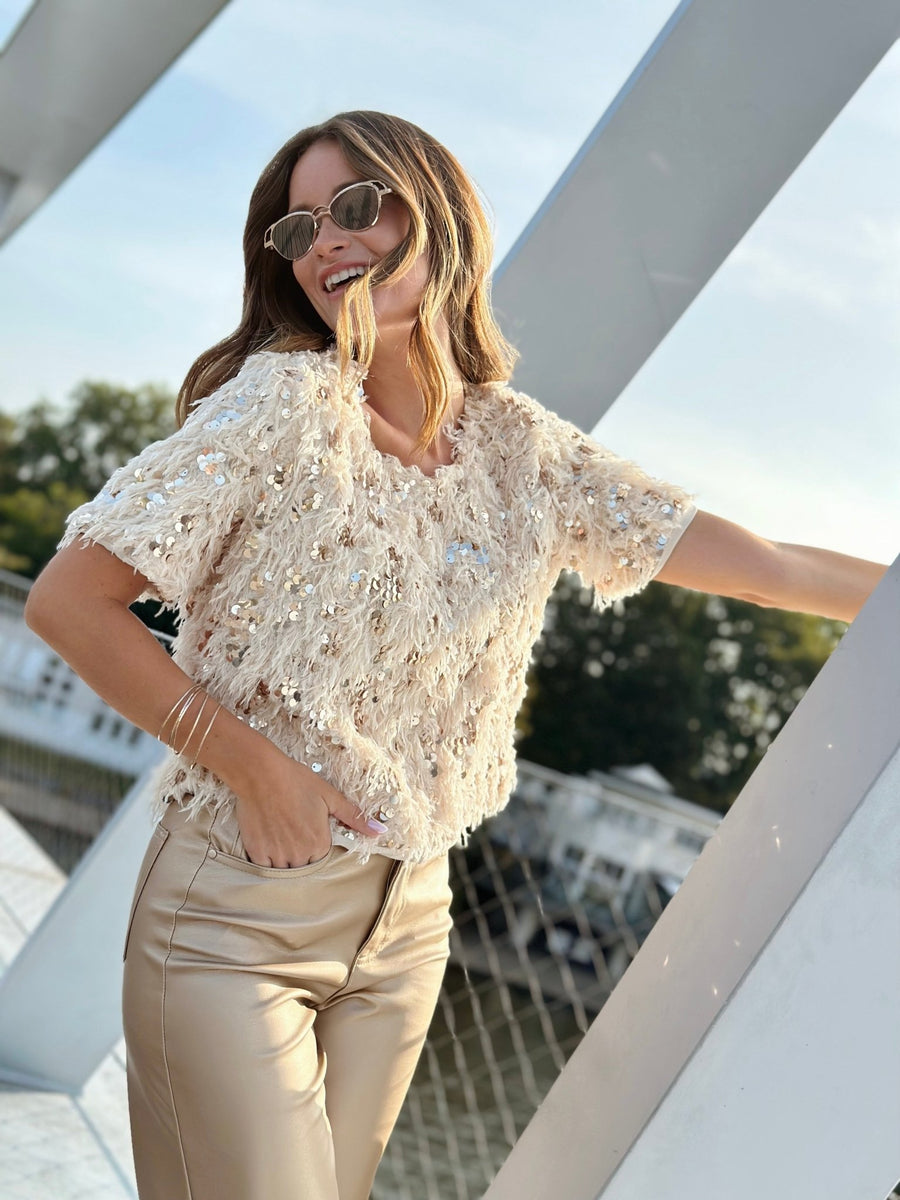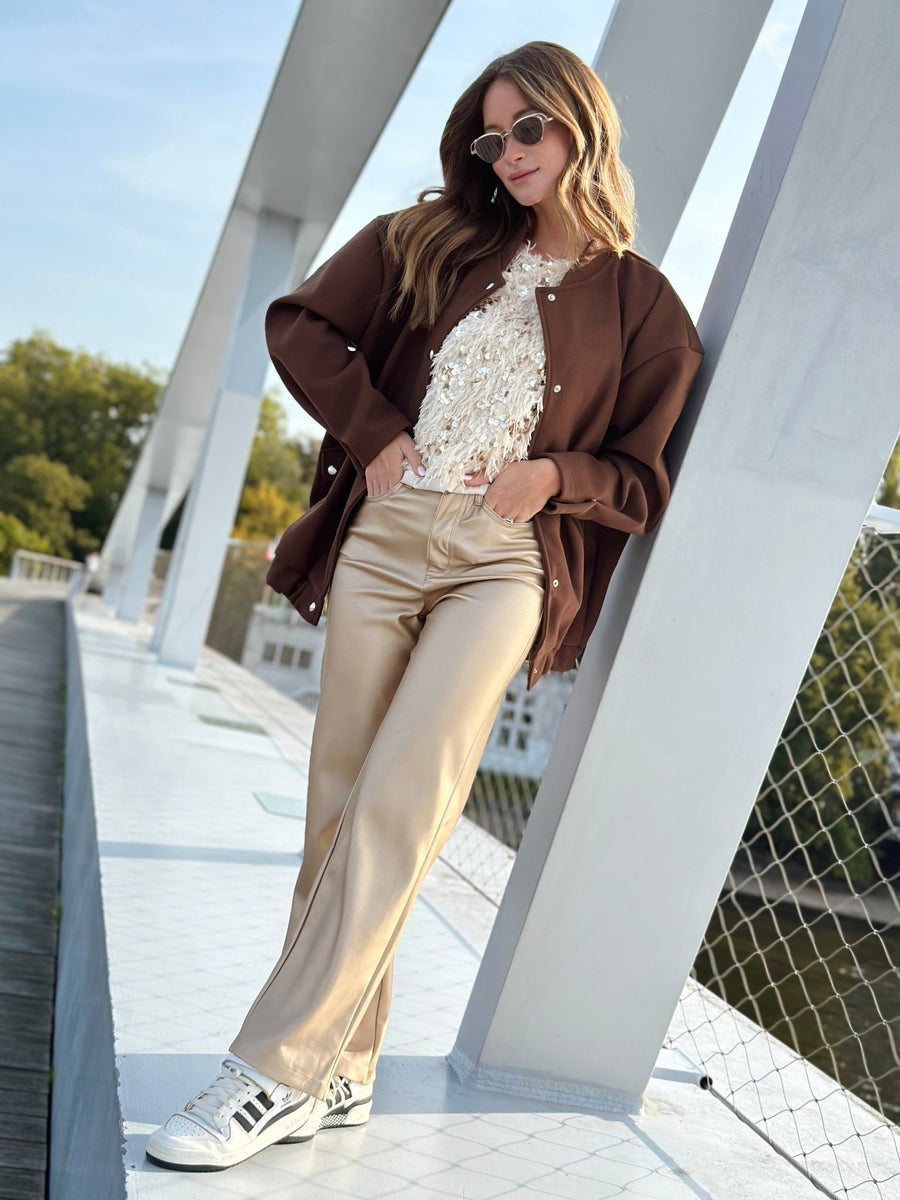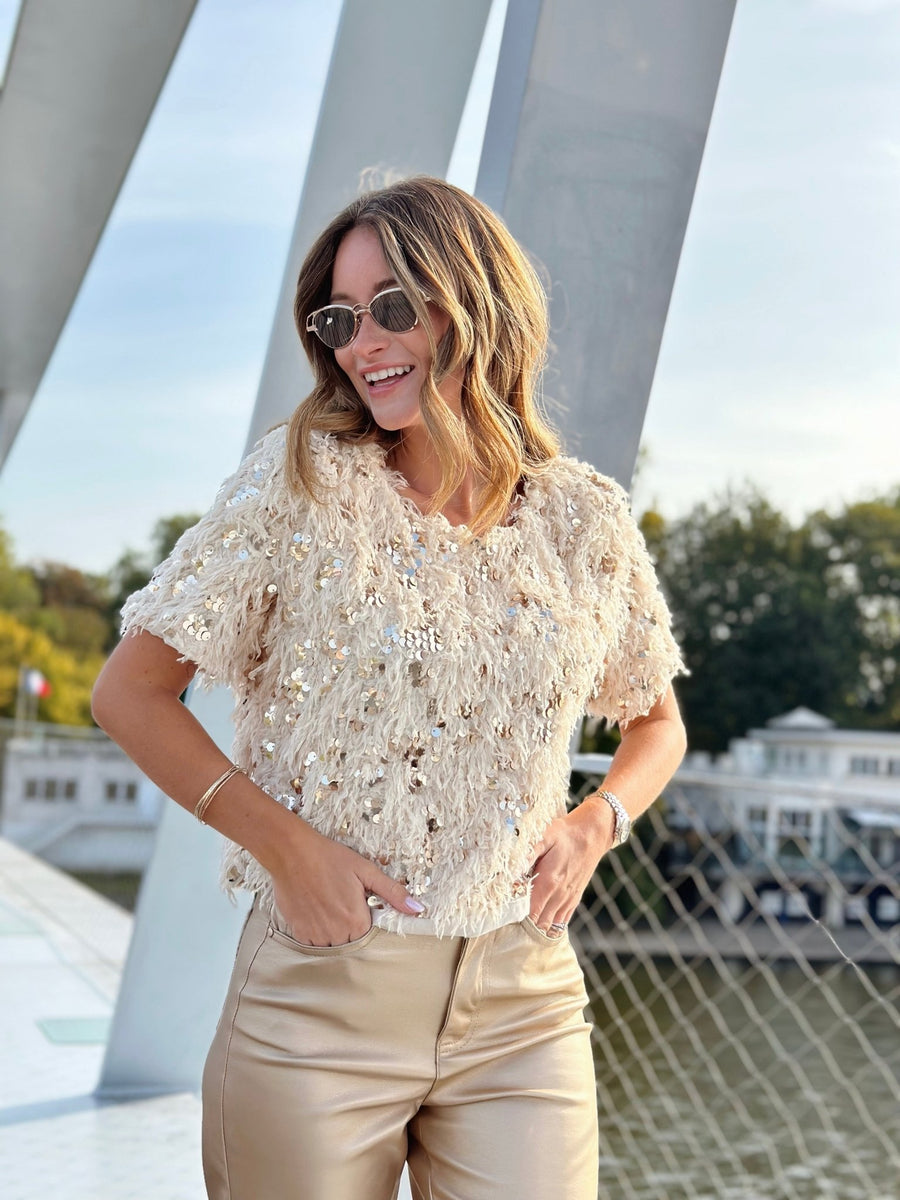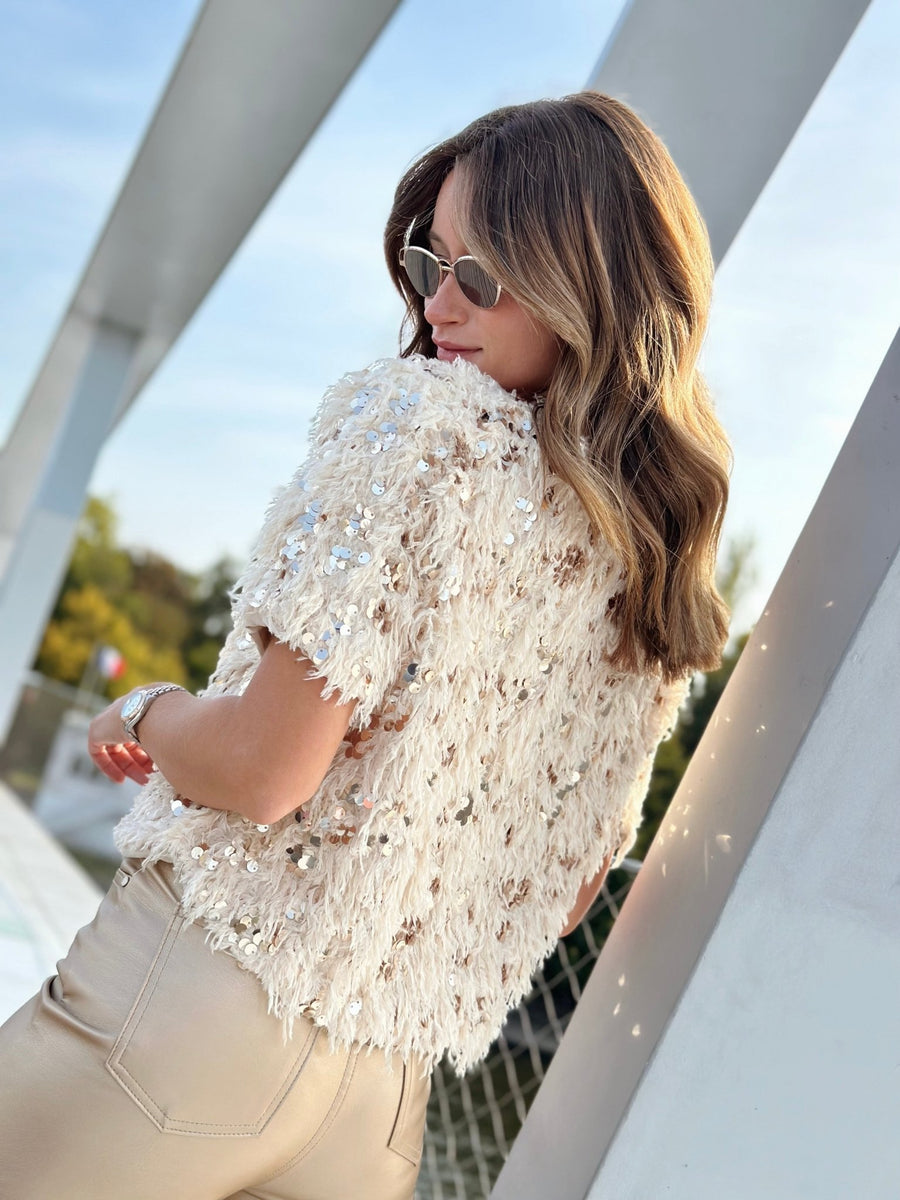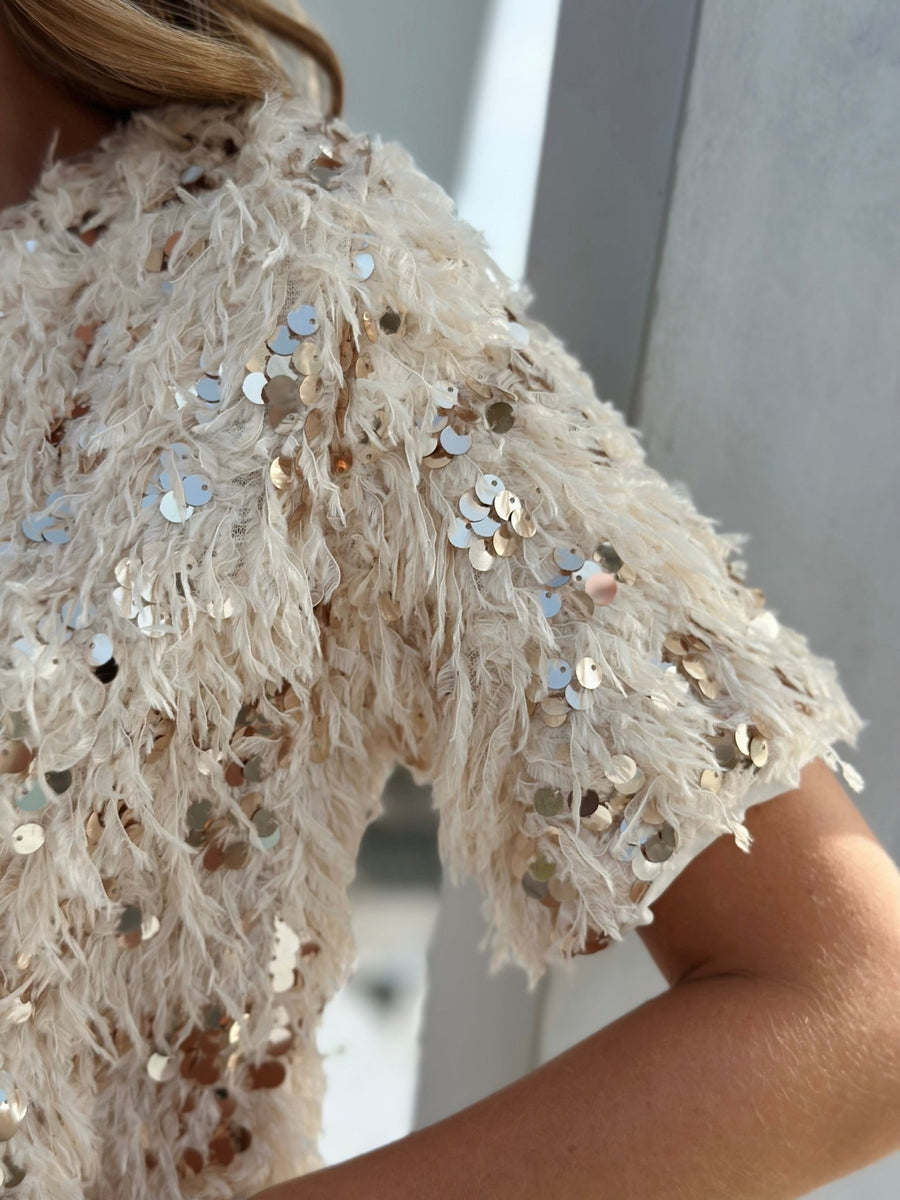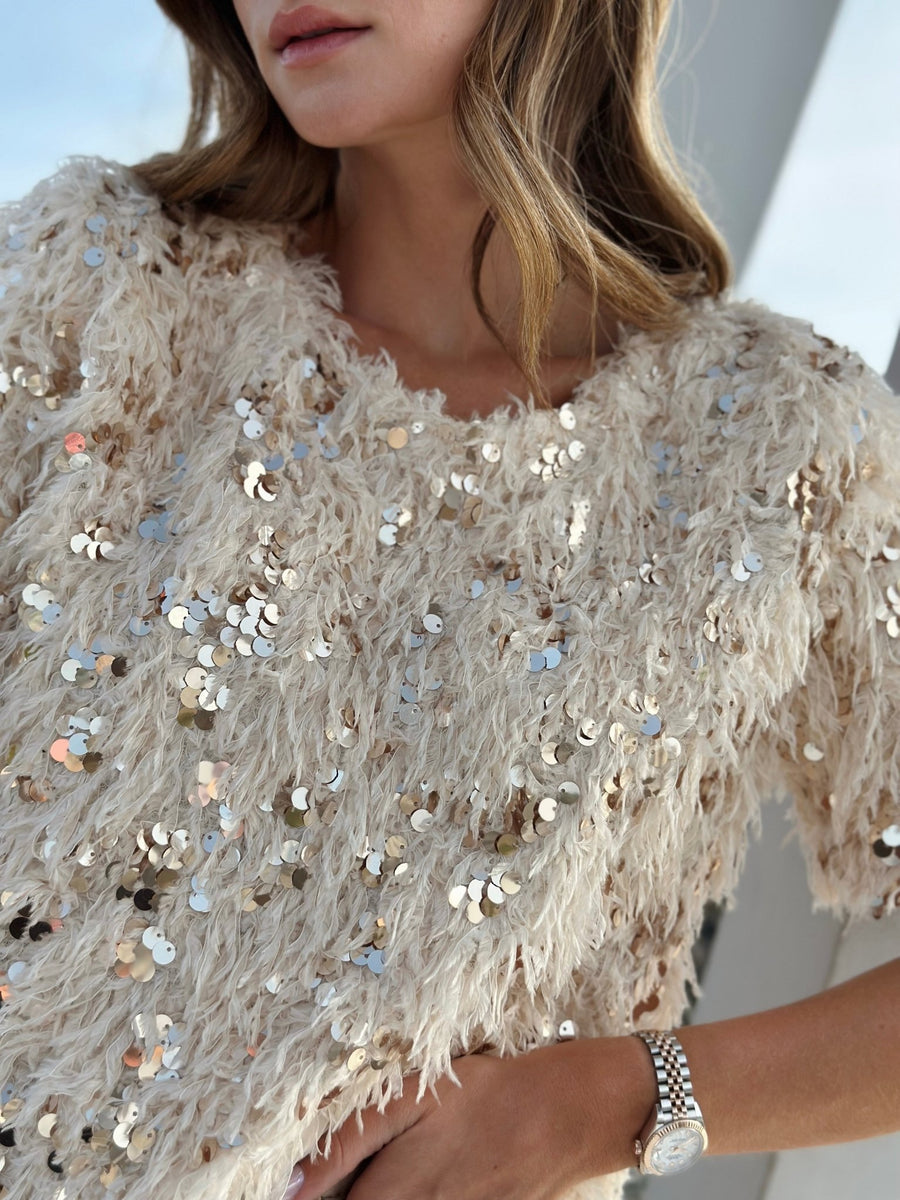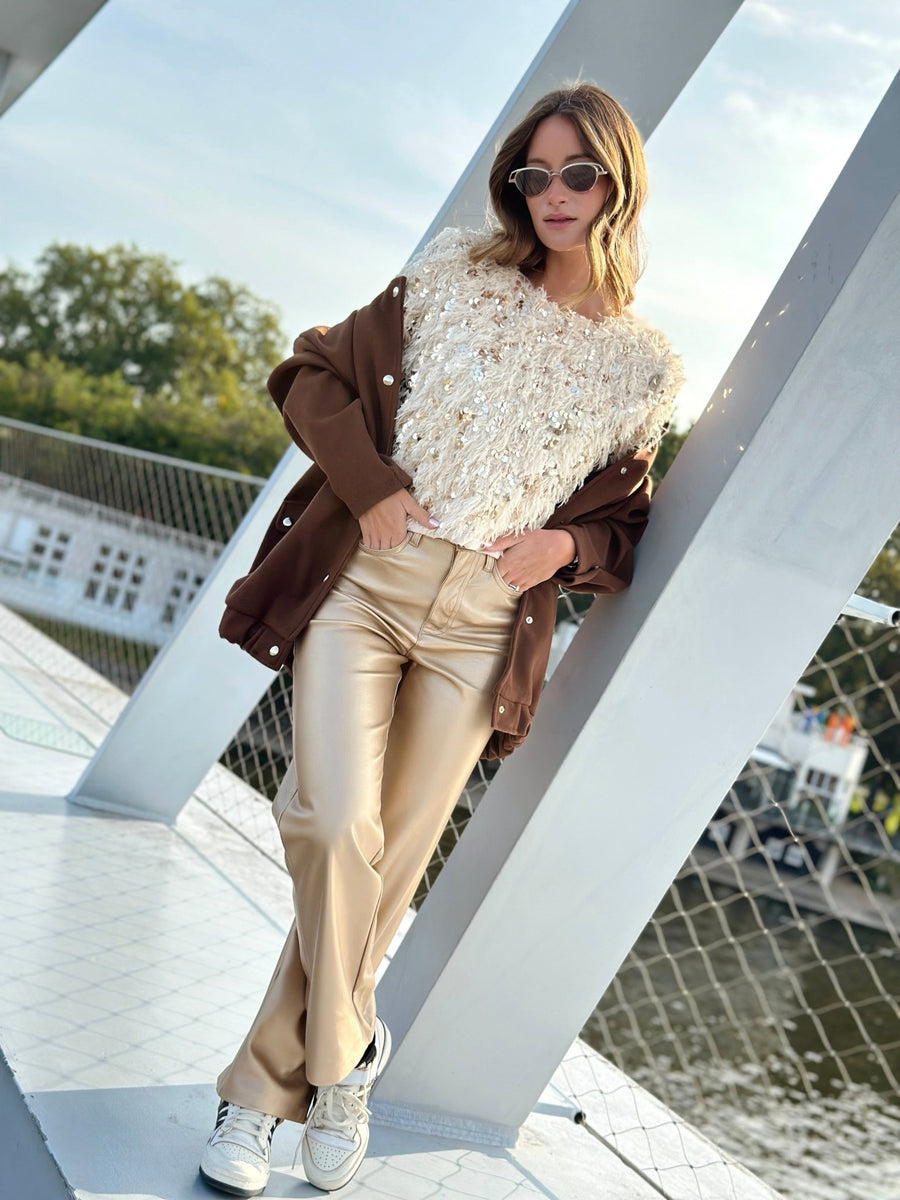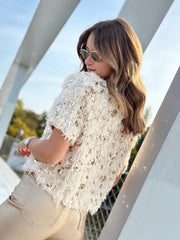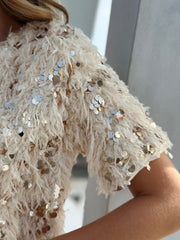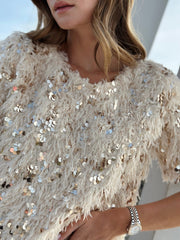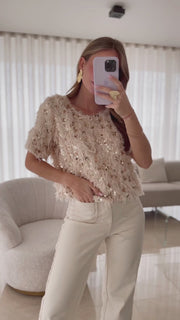Winter is sweater season! But did you know that the cut, material, and details of a sweater can flatter or detract from your figure? Here's a detailed guide to help you find the perfect style for your body type, with practical tips for a successful look.
1. Identify your body shape
Before choosing a sweater, it's important to know your body shape. Here are the main categories:
-
A-shaped body (hips wider than shoulders)
Objective: To draw attention to the upper body to balance the silhouette. -
V-shaped body shape (shoulders wider than hips)
Goal: Soften shoulder width and add volume to the hips. -
X-shaped body shape (marked waist, aligned shoulders and hips)
Objective: To highlight the waist. -
H-shaped body shape (straight silhouette, without a marked waist)
Objective: To create an illusion of curves. -
O-shaped morphology (generous shapes, overall roundness)
Objective: Lengthen the silhouette and enhance the curves.
2. The best sweaters according to your body type
For an A-shaped body shape
- Choose: Sweaters with shoulder details, such as ruffles, shoulder pads, or detailed collars. Boat or square necklines are ideal.
- Avoid: Sweaters that sit too low on the hips or are too tight in that area.
- Example: A high-neck sweater with puffed sleeves and a slightly fitted cut at the waist
For a V-shaped body shape
- Choose: Flowing sweaters with V-necks to soften the shoulders. Choose lightweight materials and subtle patterns.
- Avoid: Sweaters with shoulder pads or horizontal patterns across the upper body.
- Example: An oversized cashmere sweater with a V-neck and a tie belt to structure the silhouette.
For an X-shaped morphology
- Choose: Fitted or fitted sweaters that accentuate your waist. Belts added to a long sweater work well.
- To avoid: Cuts that are too loose and hide the waist.
- Example: A fine wool wrap sweater with an integrated belt.
For an H-shaped morphology
- Choose: Sweaters with details that create curves, such as ruffles at the chest or peplums. Asymmetrical cuts work well.
- Avoid: Straight sweaters without structure.
- Example: A sweater with a flowing peplum and a boat neck.
For an O-shaped morphology
- Choose: Flowing sweaters with lightweight fabrics and elongating cuts. V-necks and vertical patterns are your allies.
- To avoid: Materials that are too thick or patterns that are too busy.
- Example: A fine knit sweater with a V-neck and three-quarter sleeves.
3. Tips for choosing material and color
-
Matter :
- Merino wool or cashmere are ideal for a slimmer silhouette thanks to their fineness.
- Chunky knits are better suited to slimmer body types because they add volume.
-
Color :
- Dark shades (navy blue, charcoal gray, black) lengthen the silhouette.
- Light and pastel colors brighten the complexion and draw attention to the upper body.
4. The details that make the difference
- Patterns: Opt for vertical stripes or strategically placed patterns (e.g., prints on the shoulders for an A-line figure).
- The finishing touches: An asymmetrical hem can elongate the legs, while decorative buttons add elegance.
- Accessories: A thin belt or a well-chosen scarf can enhance a sweater and structure the silhouette.
5. Example of outfits according to the occasion
- For the office : A thin turtleneck sweater, a pencil skirt and high boots for a professional and elegant look.
- For an evening with friends : An oversized boat-neck sweater with leather pants and ankle boots.
- For a cozy weekend : A cable-knit sweater paired with boyfriend jeans and sneakers.
Conclusion
A sweater is an essential piece of your winter wardrobe, but it must be chosen carefully to flatter your figure. With these tips, you can select styles that combine style, comfort, and harmony.
If you have any doubts or questions, share them in the comments: we are here to advise you!
















